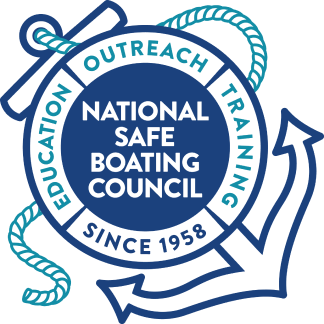Are you making it difficult to be found in an emergency?
ANNAPOLIS, MD., May 25, 2021 – “Do I know how to be found in an emergency?” That’s a question every boater should ask at the beginning of the boating season. The answer, however, is likely to go far beyond simply having a cellphone aboard. The BoatUS Foundation for Boating Safety and Clean Water offers five tips that can potentially speed a rescuer’s response to a boater in need of emergency help.
- File a float plan: Telling a responsible family member or friend, leaving a note (on your vehicle’s dashboard) at the launch ramp, or using a smart phone float plan app, are great ways to allow someone else to trigger the alarm if you fail to return by an appointed time.
- Have a VHF radio aboard — but not just any old VHF radio: All VHF radios are not alike. One of the best ways to speed an on-water rescue is to have a Digital Selective Calling (DSC) VHF radio aboard. A DSC-VHF radio does all of the things a regular VHF does, but it also has a unique press-one-button mayday feature that gives rescuers your vessel’s location — taking the “search” out of search and rescue. The newest waterproof handheld DSC-VHF radios are great for small boats. Before you install your DSC-VHF radio, be sure to get your radio’s Maritime Mobile Service Identity Number (MMSI) that is your vessel’s unique ID. BoatUS members can request one for free.
- Label your SUP, canoe, or kayak: Adding contact information on the inside of your paddlecraft with a waterproof marker could mean less time U.S. Coast Guard and first responders need to spend chasing down false alarms. This frees up valuable resources when time really counts. And let’s face it, another benefit is that you may get your paddlecraft back after it blows down the lake. It’s also a good idea to let authorities know if your paddlecraft has gone missing.
- Do not leave shore … without a fully charged phone: Smartphones are part of life ashore and aboard. The reality, however, is that many boaters put all their safety eggs in one basket and rely solely on a cellphone to call for help. Cellphone batteries generally don’t do well after a long day of running apps, listening to music, texting, and taking photos. And for many phones, water is the enemy. Consider keeping your phone a waterproof pouch or case. If you need help for routine, nonemergency assistance, such as a tow home, battery jump, fuel delivery or soft ungrounding, download the BoatUS App that connects boaters to closest local TowBoatUS response vessel.
- Register your EPIRB or PLB: The U.S. Coast Guard receives hundreds of false alerts each year from these critical safety devices. To free up more time for responsing to real emergencies, boaters need to properly register their Emergency Position Indicating Rescue Beacon (EPIRB) or Personal Locator Beacon (PLB). If you need a beacon for only a short period of time, rent one from the affordable BoatUS Foundation EPIRB/PLB rental program.
About the BoatUS Foundation for Boating Safety and Clean Water:
The BoatUS Foundation for Boating Safety and Clean Water is a national leader promoting safe, clean and responsible boating. Funded primarily by donations from the more than 800,000 members of Boat Owners Association of The United States (BoatUS), the nonprofit provides innovative educational outreach directly to boaters and anglers with the aim of reducing accidents and fatalities, increasing stewardship of America’s waterways and keeping boating safe for all. A range of boating safety courses – including 36 free state courses – can be found at BoatUS.org/Courses.


